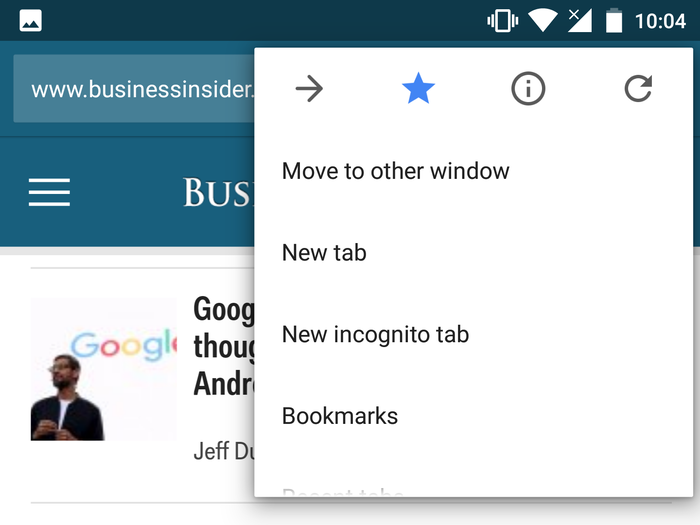
It’s worth noting that Samsung and LG have had split-screen modes on their Android skins for a few years, however.
Still, even if Nougat doesn’t have the smoothest take on the concept — some apps don’t work smoothly, and only Chrome lets you use the same app twice — it’s still a boon for larger phones.

This won't change the scale of every UI element within every app, but it works very well with Google's own software, and lets you fit many more apps on your homescreen at once. It also changes things instantly, whereas iOS forces you to reboot.


Android has actually had these new tweaks available in the past, but you had to unlock it in the OS’s System UI Tuner, a hidden menu meant for developers.

I’ve complained about it before, but all of this furthers an advantage Android has long had over iOS. The Control Center there is getting cleaner with iOS 10, but it still won’t let you customize how things show up.



Just know that existing Android phones won’t be compatible with the new mode.

 I spent $2,000 for 7 nights in a 179-square-foot room on one of the world's largest cruise ships. Take a look inside my cabin.
I spent $2,000 for 7 nights in a 179-square-foot room on one of the world's largest cruise ships. Take a look inside my cabin. Colon cancer rates are rising in young people. If you have two symptoms you should get a colonoscopy, a GI oncologist says.
Colon cancer rates are rising in young people. If you have two symptoms you should get a colonoscopy, a GI oncologist says. Saudi Arabia wants China to help fund its struggling $500 billion Neom megaproject. Investors may not be too excited.
Saudi Arabia wants China to help fund its struggling $500 billion Neom megaproject. Investors may not be too excited. Catan adds climate change to the latest edition of the world-famous board game
Catan adds climate change to the latest edition of the world-famous board game
 Tired of blatant misinformation in the media? This video game can help you and your family fight fake news!
Tired of blatant misinformation in the media? This video game can help you and your family fight fake news!
 Tired of blatant misinformation in the media? This video game can help you and your family fight fake news!
Tired of blatant misinformation in the media? This video game can help you and your family fight fake news!

Copyright © 2024. Times Internet Limited. All rights reserved.For reprint rights. Times Syndication Service.